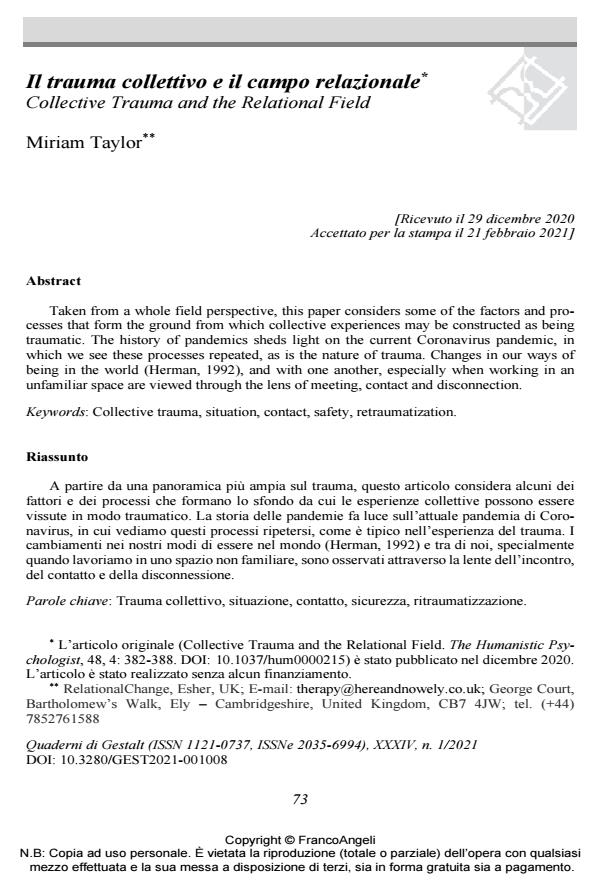Collective Trauma and the Relational Field
Journal title QUADERNI DI GESTALT
Author/s Miriam Taylor
Publishing Year 2021 Issue 2021/1
Language Italian Pages 10 P. 73-82 File size 180 KB
DOI 10.3280/GEST2021-001008
DOI is like a bar code for intellectual property: to have more infomation
click here
Below, you can see the article first page
If you want to buy this article in PDF format, you can do it, following the instructions to buy download credits

FrancoAngeli is member of Publishers International Linking Association, Inc (PILA), a not-for-profit association which run the CrossRef service enabling links to and from online scholarly content.
Taken from a whole field perspective, this paper considers some of the factors and pro-cesses that form the ground from which collective experiences may be constructed as being traumatic. The history of pandemics sheds light on the current Coronavirus pandemic, in which we see these processes repeated, as is the nature of trauma. Changes in our ways of being in the world (Herman, 1992), and with one another, especially when working in an un-familiar space are viewed through the lens of meeting, contact and disconnection.
Keywords: Collective trauma, situation, contact, safety, retraumatization
- L'intuito del terapeuta. Uno studio gestaltico sull'estetica della situazione terapeutica Margherita Spagnuolo Lobb, Febronia Riggio, Claudia Savia Guerrera, Federica Sciacca, in PSICOBIETTIVO 3/2024 pp.69
DOI: 10.3280/PSOB2023-003005
Miriam Taylor, Il trauma collettivo e il campo relazionale in "QUADERNI DI GESTALT" 1/2021, pp 73-82, DOI: 10.3280/GEST2021-001008